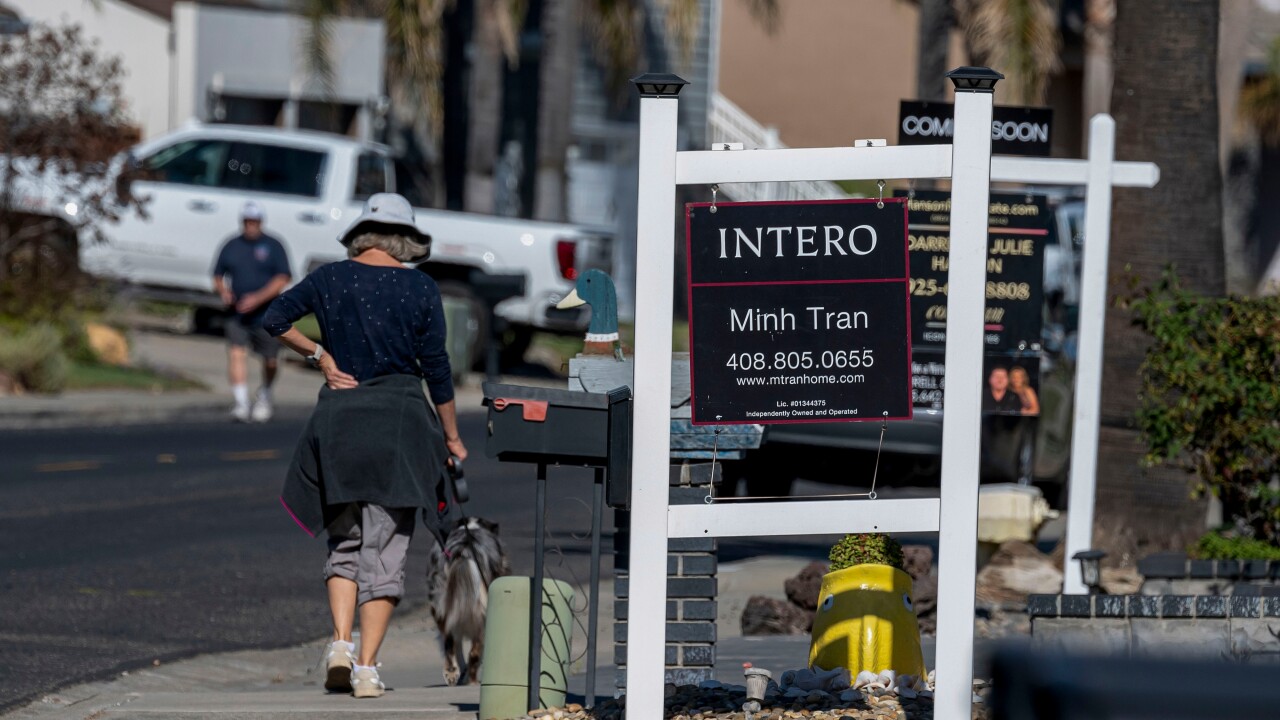Recent updates to secondary-market rules for interested party contributions and incentives mean lenders will have to pay more attention to how they use certain strategies that have become popular in the current market.
The updates, which generally are in effect now and become mandatory in early September, add additional precision in some cases and more leeway in others, according to
"The agencies use pretty broad language because they're trying to capture all the circumstances that come up. I think here what people have been doing is reading that language more broadly and the agencies are just trying to rein it in," Garris said, commenting on the clarification in some of the rules.
"I do think we're still in an environment where the agencies are focused on those contributions that are happening to get borrowers into homes," said Amanda Tucker, chief regulatory and compliance officer at Atlantic Bay Mortgage Group. "We're seeing a lot of deals come through with either a lender incentive, a buydown or a Realtor rebate, or at times, all three. So I do think that's why we're seeing so much clarification.
New rules for builder forward commitments
When asked about the new IPC and incentive rules Tucker said "builder forward commitments were really the area that we spent the most time focusing on, but this really did offer clarification in a number of spaces."
A new Freddie timing requirement for arrangements in which a builder agrees to buy a certain amount of financing at a particular rate in bulk provides details related to requirements for exemption from interested-party contribution restrictions.
"We'll have to ensure that when it comes to any consumer transactions and purchase agreements that are tied into a forward commitment block, those purchase transaction agreements are dated after the builder forward agreement," said Tucker.
"I don't know that that happens often, but I do think that that's an operational consideration that we'll certainly undertake here in the next few weeks, and we'll absolutely look to implement it prior to that September date," she added.
Fannie also exempts forward builder commitments from interested party contributions in some cases. It began requiring lenders to use a special code to identify them last year. Freddie also requires disclosure around forward builder commitments.
The new Freddie Mac directive adds to other signs — like
Leeway for incentives; new affiliation, rebate definitions
Other GSE updates include Fannie's removal of a limit on the incentives lenders can offer to borrowers this month after an earlier increase in May from $500 to $2,500. Freddie appears to have removed documentation related to limits, according to
Freddie Mac's latest definition of affiliation states that one exists "when two parties are owned or controlled by a common third party or when one of the parties has ownership or control over the other."
Fannie Mae defined affiliation in its latest update as existing "when there is direct common ownership or control by the lender over the interested party, by the interested party of the lender or by a third party over both."
Freddie Mac also added Realtor rebates as a possible form of sales concession, such as when one goes toward furniture for the home. Such rebates are different from those applied to the cost of the loan. Such Realtor rebates are considered financing concessions.
Lenders typically must subtract a sales concession's cost from the property and use the lower of that amount or the property's appraised value to calculate loan-to-value ratios that get used to qualify borrowers for financing.
Financing concessions, or contributions toward the loan from third parties, are subject to restrictions that include maximum amounts. They can't exceed borrowers' total closing costs and may face other restrictions based on the loan's characteristics.
Both sales and financing concessions are considered interested party contributions.





